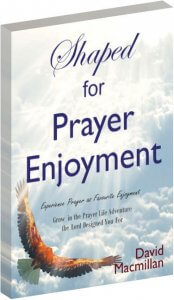I find it helpful to view prayer in three prayer life frames. The frames complement one another; each adds to our enjoyment of the other two.
I’m challenged by the evangelism scenes in Acts 17. But, instead of applying them to lifestyle witness, today’s blog will use the scenes to illustrate three prayer life frames. First, a quick look at the scenes.
The PATTERN scene
The new mission team from Antioch followed a pattern when entering a target city. Where possible, they headed directly for the Jewish synagogue to proclaim the Messiah.1 Paul did that in Thessalonica, as was his custom (Acts 17:2).
Some in his synagogue audience believed, while others agitated mob violence to destroy him. But, despite opposition, he followed the same pattern in his next target cities (Acts 17:4-5, 10, 17).
The PLAN scene
Later, in Athens, while waiting for the rest of his team, Paul followed his synagogue evangelism pattern (Acts 17:17). But he also had a plan: daily marketplace witness.
The marketplace audience and vibe were very different to the synagogue. His plan was to go among them day by day and speak with those who happened to be there. While following that plan, a new evangelism scene opened up to him.
The SPONTANEOUS scene
A group of philosophers interrupted Paul’s marketplace witness. They wanted to hear more, so they led him to a gathering of the curious on the Areopagus. There, on a hill devoted to Mars, the Roman god of war, and surrounded by objects of pagan worship in a city full of idols, Paul had an unplanned opportunity to share his gospel (Acts 17:16-20).
All three scenes are important; each served Paul’s witness differently. The same is true of the three prayer life frames. There is some overlap, but each frame serves our prayer growth and enjoyment in a particular way. Omitting one frame removes something from the other two.
The Prayer Life Frames
- PATTERNS: These are prayer habits, routines or disciplines that give structure and consistency to daily prayer life. E.g., fixed prayer times, useful formats, regular prayer walks, fasts, prayer groups, etc.
- PLANS: These are short- or long-term commitments to specific prayer objectives. The context can be personal and/or corporate prayer. The aim might be:
- Devotional – a growth surge in admiration of, appetite for and intimacy with the Lord
- Pastoral – supplication for a person or group in need
- Strategic – prayer for Kingdom advance in a target community or people group.
Sometimes a prayer plan will require a change in our regular prayer patterns/routines.
- SPONTANEOUS: Prayer spontaneity is enhanced by our prayer disciplines and plans, and doesn’t replace them. Like Paul’s witness on Mars Hill, someone can invite our prayer response, but the biggest triggers to ‘anytime prayer’ are within us. The fuse of spontaneous prayer lights easily when our hearts want conversation with the Lord. It can be an impulse to admire the Lord in a grocery store aisle, a response to a scripture or praise song while driving, a middle-of-the-night nudge to whisper gratitude for mercy, a prompt to pray during a coffee conversation, or the urge to lament while watching a breaking news report. These spontaneous prayer responses – whispered or audible, private or public – are an exciting part of the pray continually lifestyle (1 Thes 5:17).
- Which of the three prayer life frames do you feel strongest in? Which would you like to give more attention to?
- What pattern(s) have you found helpful for growing your prayer life?
- Consider adding a new prayer plan (devotional, pastoral, or strategic), or revising an existing one. Will it fit into your current prayer habits/routines, or require a change?
- For the next week, have start-of-day and end-of-day conversations with the Lord about growing in the enjoyment of spontaneous prayer.
1Acts 13:5, 14-15




